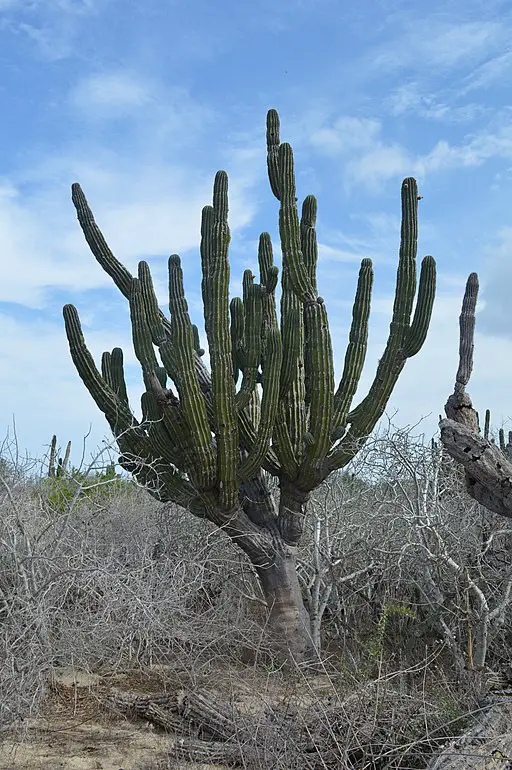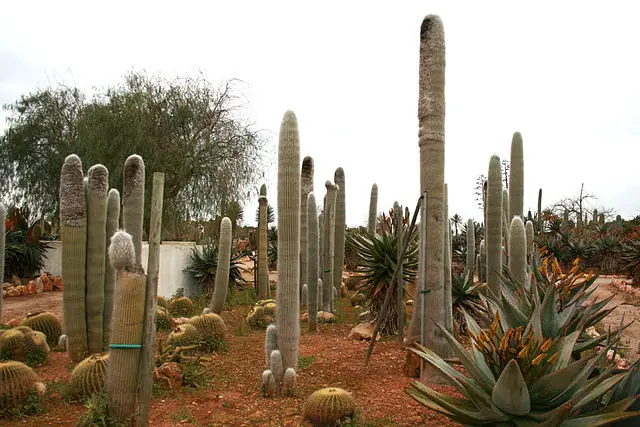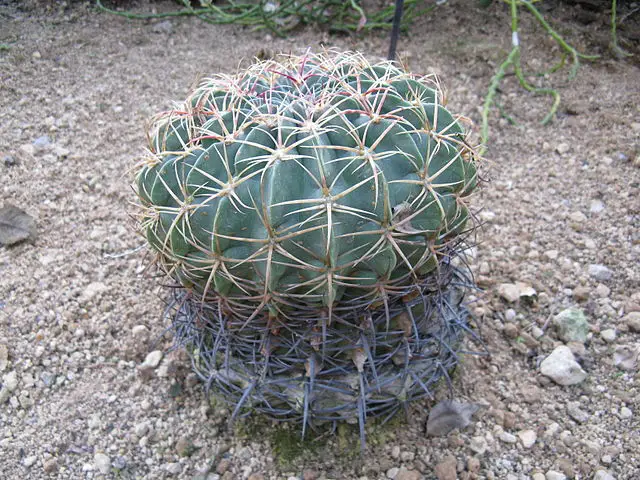Can Cactus Carry Out Photosynthesis? In one sentence, can cacti carry out photosynthesis? Yes, but they do not do so to the degree of other, more common prairie plants. The National Cactus and Succulent Society defines photosynthesis as “the synthesis of carbohydrates from carbon dioxide and water, using light energy.” The plant captures the sun’s energy and uses it to convert carbon dioxide and water into carbohydrates, such as sugars and starches.
All plants perform photosynthesis but how can cactus do it successfully given that the environment that they are typically found is lacking one of the essential ingredients, water.
Cactus plants are able to do photosynthesis but they do it in a fundamentally different way to many other plants which allows them to survive in harsh desert environments where water is scarce. They only absorb carbon dioxide at night through their stems to avoid water loss and store it for use during the day when the sunlight is available during the day using a process known as CAM photosynthesis (Crassulacean Acid Metabolism).
Photosynthesis is a process in which carbon dioxide and water is converted into glucose in the presence of light, and is the process that allows plants to create food for themselves. For most plants, there are two steps in photosynthesis. The first is called the light reactions, the second is the dark reactions. The light reactions are when the chlorophyll in plants converts atmospheric carbon dioxide into glucose in the presence of water. The dark reactions are when oxygen is released into the atmosphere.

In this process, carbon dioxide is collected from the atmosphere through holes called “stomata” in their leaves and stems. When these holes are opened up moisture escapes from the plant at the same time as the carbon dioxide is absorbed. However, cacti that live in arid environments can not afford to lose moisture as it will threaten the survival of the plant.
To avoid this problem Cacti and other succulents have developed a unique process where the stomata opens only at night when it is relatively cool reducing moisture lost. The carbon dioxide absorbed is stored chemically as maleic acid until the sun comes out. When light is available the maleic acid is converted back into carbon dioxide allowing the photostnthesis process to be completed.
This process of using CAM photosynthesis saves a significant amount of water as most other plants lose around 97% of the water that they absorb through the roots to transpiration.
About Cacti
Cacti are a large and diverse group of succulent plants in the family Cactaceae, a family comprising about 127 genera with some 1750 known species that are native to the Americas and are generally associated with the hot dry areas of the southern united states and Mexico, however, they can also be found as far north as Canada.
Cacti are succulent plants that can grow as tall as 60 feet while others grow as short as a half-inch. Cacti can survive in extremely hot climates but some species can also survive under snow and ice. They differ from other succulent plants because they do not have leaves and they have a unique structure called areoles.
The areoles are a bumpy structure that appears on the surface of the plant where the spines and flowers are produced from. The spines are not thorns like what is found on other succulents, it is instead a form of a modified leaf. The lack of leaves is designed to maximize the volume of the plant while minimizing surface area.

The types of cacti generally fall into 3 major categories,
- Arborescent cacti (tree like cacti)
- Columnar Cacti
- Golular
The area also cacti outside these 3 major groups that tend to be placed in a miscellaneous category.
Arborescent varieties are those plants that have an appearance that is similar to a tree with the plant having a central trunk that is generally woody in nature and topped by a number of branches. An example of a cactus in this group is Pachycereus pringlei which is shown in the image below.

Columnar cacti are also erect plants that have cylinder-shaped stems that can appear as a single column, but they can also be sometimes branched. It can sometimes be difficult to tell the difference between arborescent and columnar varieties when looking at older specimens as they can become increasing tree-like with age. An example of a columar variety is shown below.

Globular cacti are a relatively short group of cacti that are generally ball-shaped, and they are often seen in groups as the plants produce pups at the base of the plant in many cases.

Other forms of cacti that don’t fit into the three major categories are typically found in tropical forests as Epiphytic climbers, which means that they are not rooted in the ground. In the right conditions, these plants can become very large and are often found hanging from trees.
To survive in these challenging climates Cacti have developed several adaptations that reduce water loss. One of the most obvious features that aids in the plants’ survival is the presence of spines. These spines play several important roles that allow the plant to survive. The first is that that they discourage animals from eating the plant. The spines are in many cases barbed, which means they make it difficult for animals to remove them once they are stuck.
The second important feature is that they disrupt reduce the airflow across the surface of the stems which reduces the evaporation rate. Lastly, the spines provide some shade which also reduces the rate of moisture loss.
Cacti also have comparatively thick stems compared to other plants that allow water to be stored in their stems. These stems often contain ridges that allow the stems to expand in size allowing the plant to store more water when available.
Additionally, Cacti have a specialized root system that is relatively shallow which allows the plant to mop up any surface water that appears. To conserve water the roots system develop will shrivel up when the conditions are dry and expand when the conditions are dry.
Related Articles
What Is The Difference Between Cactus And Aloe Vera?
Is The Such A Thing As A Euphorbia Cactus?
What is the Difference Between a Cactus And An Agave?
